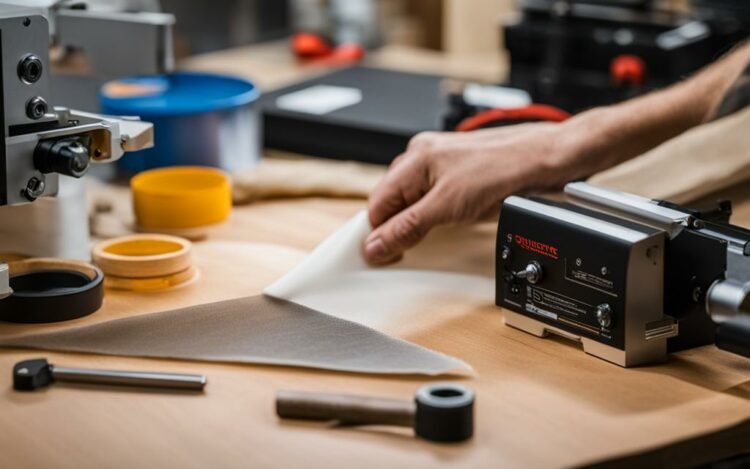Investing in a laser engraver can be a significant expense, so it’s important to keep your machine in top shape to ensure its longevity and optimal performance. Proper maintenance and cleaning can help extend the life of your machine and prevent costly repairs.
Key Takeaways:
- Regular cleaning is crucial for optimal performance.
- Proper lubrication keeps the machine running smoothly.
- Regularly check and replace worn parts for optimal performance.
- Maintain a clean environment around the machine.
- Monitor and maintain power levels for accurate engravings.
Regular Cleaning for Optimal Performance
Regular cleaning is essential for maintaining the optimal performance of your laser engraver. It helps prevent reduced performance, inaccurate engraving, and potential damage to the machine. By following a simple maintenance checklist and implementing best practices, you can ensure that your laser engraver stays in top shape.
Here are some key steps to include in your regular cleaning routine:
- Cleaning the lens: The lens is a critical component that can accumulate dust and debris, affecting the quality of your engravings. Use a soft microfiber cloth and lens cleaning solution to gently clean the lens.
- Cleaning the mirror: Like the lens, the mirror can also collect dirt and particles over time. Use the same gentle cleaning materials to clean the mirror and remove any obstructions.
- Cleaning the rails, bearings, and drive belts: These parts are responsible for the smooth movement of the laser engraver. Regularly check for any buildup of debris or dirt and clean them using a soft cloth or brush.
Remember to always follow the manufacturer’s guidelines when cleaning your laser engraver. Using the right materials and cleaning solutions will help protect the critical components of your machine and ensure optimal performance.
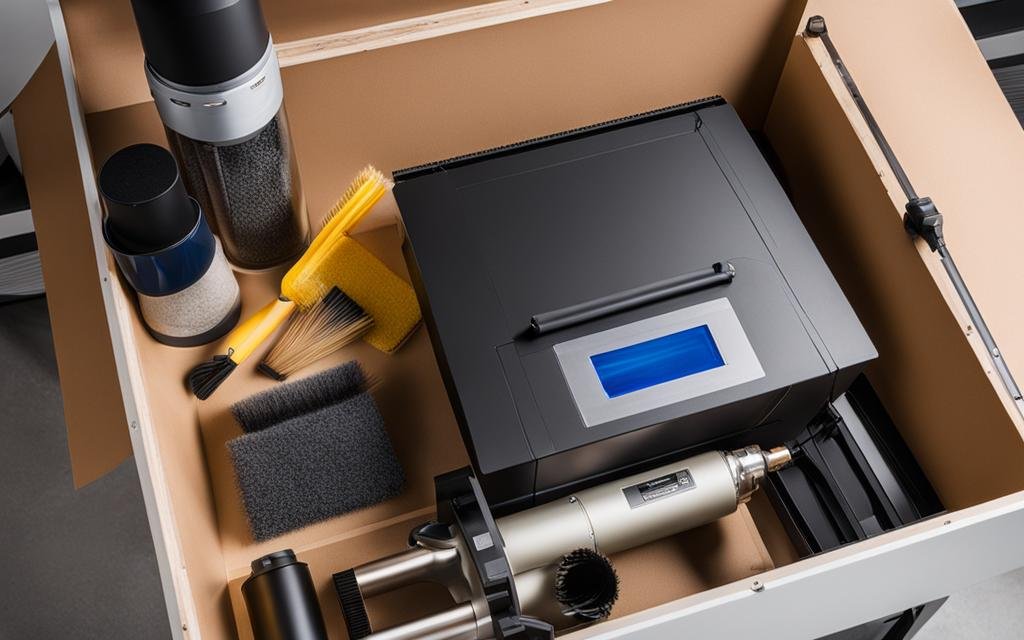
Benefits of Regular Cleaning:
- Prevents reduced performance and inaccurate engravings.
- Helps prevent potential damage to the machine.
- Extends the lifespan of your laser engraver.
- Maintains the quality and consistency of your engravings.
By incorporating regular cleaning into your maintenance routine, you can optimize the performance and lifespan of your laser engraver, ensuring that it continues to deliver high-quality results for years to come.
Pro Tip: Ready to purchase a laser engraver? Don’t forget to use xTool discount codes for extra savings.
Proper Lubrication for Smooth Operation
Proper lubrication is essential for maintaining the smooth operation of your laser engraving machine. Regular upkeep and routine servicing ensure that the moving parts of your machine continue to function optimally, reducing friction and preventing excessive wear and tear. By following a few simple steps, you can keep your machine running smoothly for years to come.
1. Use the Right Lubricant
Choosing the correct lubricant is crucial for the proper maintenance of your laser engraver. Using a silicone-based lubricant specifically designed for precision machinery will help protect the components and minimize friction. Avoid using oil-based lubricants or WD-40, as they can attract dust and debris, leading to clogged or malfunctioning parts.
2. Follow the Manufacturer’s Recommendations
Each laser engraver model may have different lubrication requirements. It’s important to refer to the manufacturer’s guidelines and schedule for lubrication. Some machines may need lubrication monthly, while others may require it every few months. By following the recommended maintenance schedule, you can ensure that your machine operates at its best.
3. Apply the Lubricant Correctly
When applying lubricant, remember that a little goes a long way. Avoid over-lubricating, as excess lubricant can attract dust and lead to buildup. Apply a small amount of lubricant to the designated areas, such as rails, bearings, and drive belts. Use a clean cloth or brush to distribute the lubricant evenly, ensuring that all moving parts are adequately covered.
Proper lubrication is key to maintaining the smooth operation of your laser engraver. By using the right lubricant, following the manufacturer’s recommendations, and applying the lubricant correctly, you can prevent unnecessary wear and extend the lifespan of your machine. Incorporate regular lubrication into your maintenance routine to keep your laser engraver running smoothly and producing accurate engravings.
Check and Replace Worn Parts for Optimal Performance
Regularly checking for and replacing worn or damaged parts is crucial for maintaining the optimal performance of your laser engraver. Over time, components like belts, bearings, and motors can undergo wear and tear, leading to decreased accuracy and productivity. By conducting visual inspections and implementing regular maintenance, you can identify signs of wear or damage and replace them with high-quality parts recommended by the manufacturer.
One of the key areas to inspect is the drive belt. Look for signs of fraying, cracking, or stretching, as these indicate that the belt may need to be replaced. Additionally, check the bearings to ensure they are functioning smoothly and without excess play. If you notice any grinding or rough movements, it may be necessary to replace the bearings to maintain the machine’s precision.
Another critical component to monitor is the motor. Pay attention to any unusual noises, vibrations, or overheating, as these can be signs of a failing motor. If detected, promptly replace the motor to avoid further damage to the machine and ensure consistent performance during engraving.
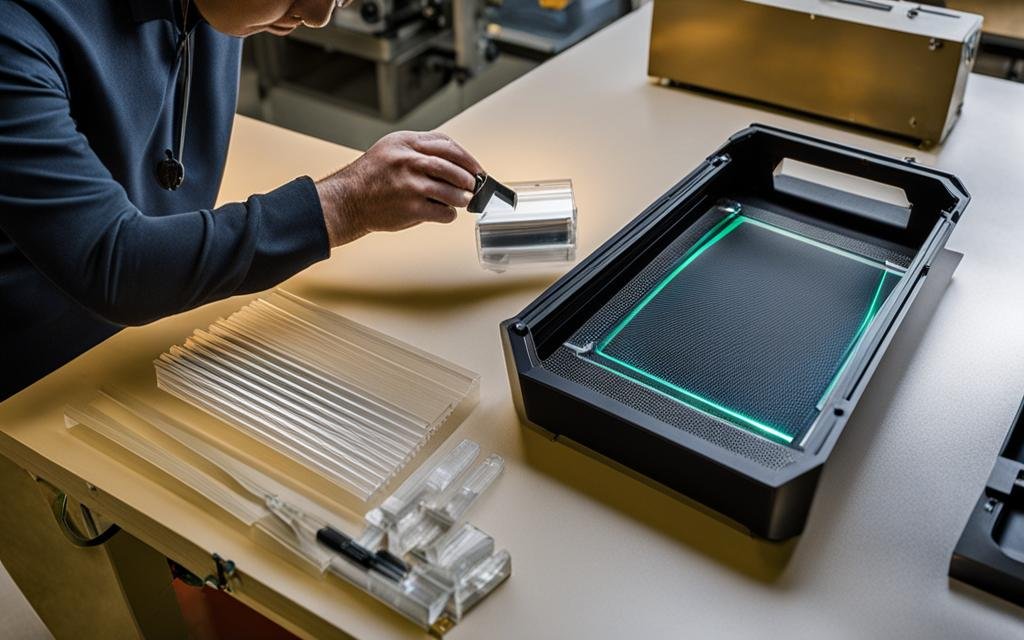
Commonly replaced parts for laser engravers:
- Laser tube: Over time, the laser tube can degrade and lose power, resulting in reduced engraving quality. Replacing the tube can restore optimal performance.
- Lens: The lens is prone to scratches and residue buildup, which can affect the laser beam’s focus and accuracy. Regularly cleaning and replacing the lens is necessary for precise engravings.
- Mirror: The mirrors within the laser engraver can become misaligned or damaged, leading to distorted engravings. Aligning and replacing mirrors as needed is crucial for maintaining consistent results.
- Belts: The drive belts in the laser engraver can wear out, causing inaccurate movements and reduced precision. Replace worn belts to ensure smooth and precise operation.
Benefits of replacing worn parts:
- Improved engraving quality: Replacing worn parts restores the machine’s precision, resulting in higher-quality engravings with sharp details and accurate designs.
- Enhanced productivity: Optimal performance ensures consistent speed and accuracy during the engraving process, increasing overall productivity.
- Longevity of the machine: By promptly replacing worn parts, you can prevent further damage to other components and extend the lifespan of your laser engraver.
Maintaining a Clean Environment for Longevity
Keeping the area around your laser engraver clean is essential for maximizing its lifespan and ensuring optimal performance. Dust, debris, and contaminants can accumulate on the machine’s components over time, leading to reduced accuracy and potential damage. By following a few simple cleaning practices, you can maintain a clean working environment for your laser engraver.
Regular Cleaning Routine
Implementing a regular cleaning routine is the first step in keeping your laser engraver and its surroundings clean. Here are some tips:
- Wipe down the exterior surfaces of the machine with a soft microfiber cloth to remove dust and fingerprints.
- Clean the lens and mirrors using a specialized lens cleaning solution and a lint-free cloth. Be gentle and avoid applying excessive pressure to prevent damage.
- Remove any debris or residue from the rails, bearings, and drive belts using compressed air or a soft brush.
- Vacuum or sweep the area around the engraver to eliminate loose particles that could enter the machine.
Monitoring Temperature and Humidity
Extreme temperature and humidity levels can have a negative impact on your laser engraver. High humidity can cause corrosion and damage to the machine’s electronic components, while excessive heat can affect the performance of the laser system. Keep your engraver in a controlled environment with stable temperature and humidity levels to ensure optimal operation and longevity.
Utilizing Air Filters or Dust Collection Systems
To minimize the presence of airborne particles and contaminants around your laser engraver, consider using air filters or dust collection systems. These devices can help capture dust and debris before they settle on the machine’s components, reducing the need for frequent cleaning and preventing potential damage. Choose filters or collection systems that are compatible with your specific engraver model and follow the manufacturer’s recommendations for installation and maintenance.
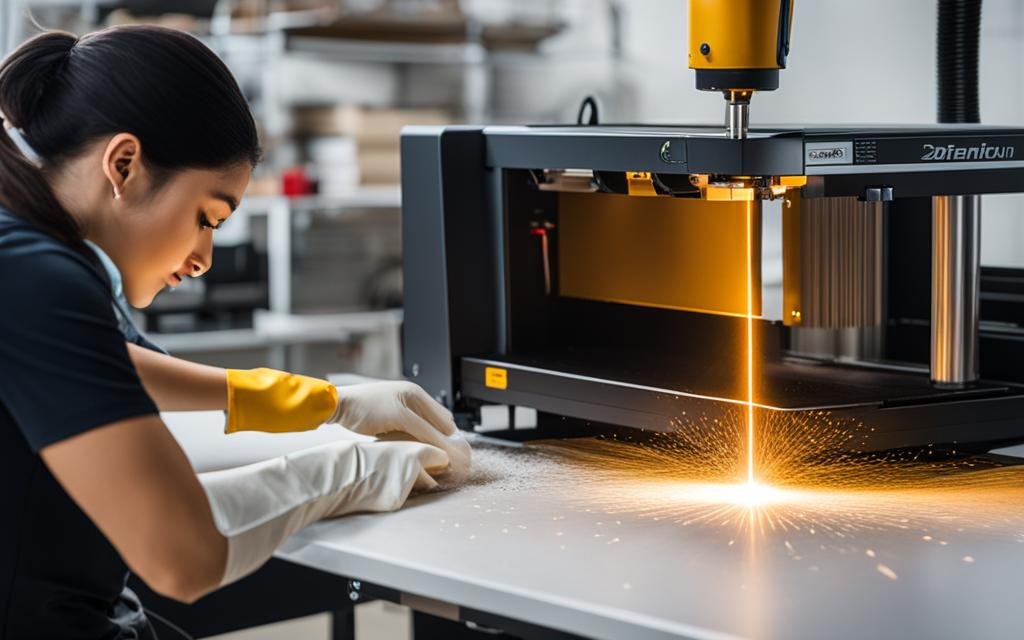
Maintain Power Levels for Accurate Engravings
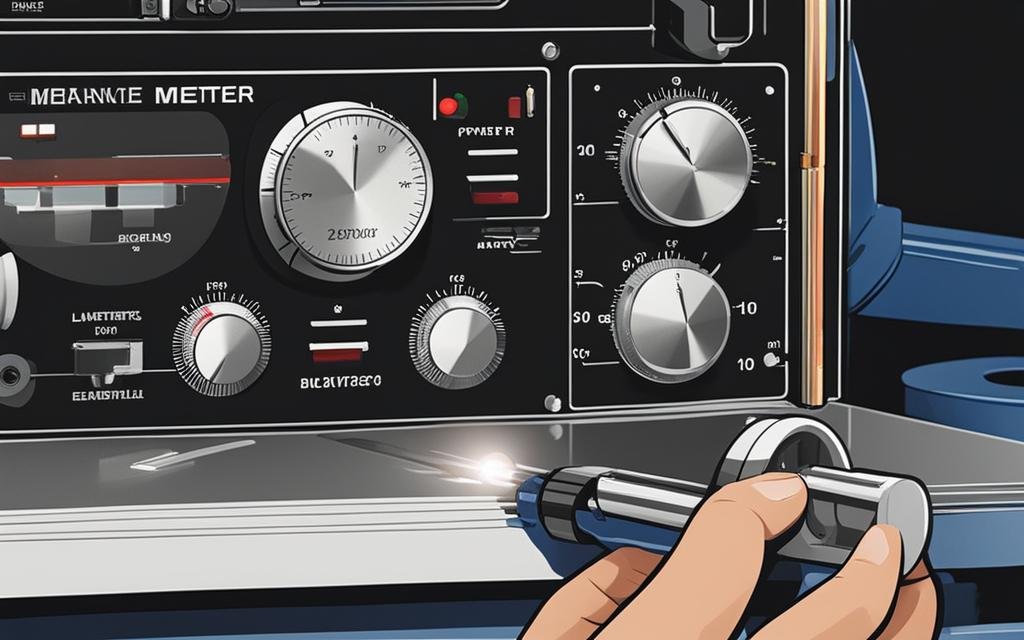
Monitoring and maintaining the power levels of your laser engraver is crucial for achieving accurate and high-quality engravings. Fluctuations or inconsistencies in power levels can lead to uneven or incomplete engraving results. To ensure consistent performance, follow these maintenance tips:
- Check Power Output: Regularly monitor the power output of your laser engraver using power meters or sensors. This will help you identify any deviations from the desired power levels.
- Perform Calibration: If you notice significant variations in power output, it may be necessary to recalibrate your laser engraver. Follow the manufacturer’s guidelines to correctly calibrate your machine.
- Inspect Power Supply: Check the power supply unit for any signs of wear or damage. Loose connections, frayed wires, or faulty components can affect power delivery. Replace or repair any defective parts as needed.
- Follow Maintenance Schedule: Adhere to the recommended maintenance schedule provided by the manufacturer. This includes regular inspections, cleaning, and servicing to ensure optimal power output.
By monitoring and maintaining the power levels of your laser engraver, you can achieve consistent and precise engravings, enhancing the quality and accuracy of your work.
Conclusion
Proper maintenance and care are essential for maintaining the longevity and optimal performance of your laser engraver. By following a few key tips and best practices, you can ensure that your machine stays in top shape for years to come.
Regular cleaning is crucial for optimal performance. Take the time to clean the lens, mirror, rails, bearings, and drive belts using gentle materials and cleaning solutions. This will help prevent reduced performance and inaccurate engraving, ultimately extending the life of your machine.
Don’t forget about lubrication. Using the right type of lubricant and applying it correctly will keep the moving parts of your laser engraver running smoothly. Follow the manufacturer’s recommended schedule and avoid over-lubricating or under-lubricating to maintain peak performance.
It’s also important to regularly check for and replace worn or damaged parts. Belts, bearings, and motors can undergo wear and tear over time, affecting accuracy and productivity. Conduct visual inspections and keep up with recommended maintenance to ensure your machine operates at its best.
In addition, maintaining a clean working environment is key. Regularly clean the area around your laser engraver to prevent dust, debris, and contaminants from affecting its performance. Monitor temperature and humidity levels and consider using air filters or dust collection systems for a cleaner workspace.
Lastly, monitor and maintain power levels for accurate engravings. Fluctuations or inconsistencies in power levels may indicate the need for recalibration or replacement of the power supply. Utilize power meters or sensors to measure actual power output and follow calibration procedures for consistent and precise results.
By following these maintenance tips and routines, you can ensure the longevity and optimal performance of your laser engraver, enabling you to enjoy years of successful laser engraving.

